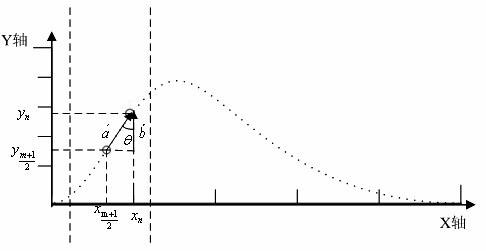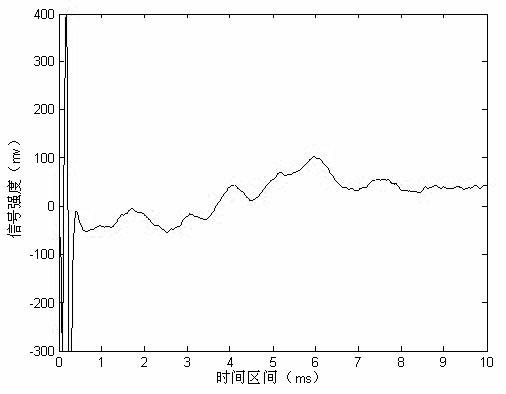Brand-new algorithm for ABR (auditory brainstem response) signal crest detection
A wave peak and algorithm technology, applied in the detection field, can solve problems such as inconvenient diagnosis
- Summary
- Abstract
- Description
- Claims
- Application Information
AI Technical Summary
Problems solved by technology
Method used
Image
Examples
Embodiment Construction
[0013] A brand new algorithm for ABR signal peak detection, including the following steps:
[0014] 1. Denoising of the original ABR signal:
[0015] The acquired original ABR signal was denoised by superposition averaging technology, that is, N times of stimulation were applied, the discretized data was adjusted to align with the time when each stimulation appeared, and then the average value was taken. That is, these ABR signals obtained by using the superposition and averaging method are based on the following assumptions:
[0016] a) Under the same stimulus, the waveform of the brain-evoked response signal remains unchanged, that is, the response signal is a deterministic signal.
[0017] b) The background noise is random and can be eliminated by multiple superposition. And, its relationship with the ABR signal is f(t)=s(t)+n(t), where s(t) is the real ABR signal (without noise), n(t) is the background noise, f (t) is the measurement data (ABR signal + noise). Under su...
PUM
 Login to View More
Login to View More Abstract
Description
Claims
Application Information
 Login to View More
Login to View More - R&D
- Intellectual Property
- Life Sciences
- Materials
- Tech Scout
- Unparalleled Data Quality
- Higher Quality Content
- 60% Fewer Hallucinations
Browse by: Latest US Patents, China's latest patents, Technical Efficacy Thesaurus, Application Domain, Technology Topic, Popular Technical Reports.
© 2025 PatSnap. All rights reserved.Legal|Privacy policy|Modern Slavery Act Transparency Statement|Sitemap|About US| Contact US: help@patsnap.com



